A 1954 Mercedes-Benz W196R shattered auction records at the Bonhams Goodwood Festival of Speed 2013 auction, selling for £19,601,500 (USD $29,650,095, €22,701,864) on Friday 12 July. The sales price for the ex-Juan Manuel Fangio Formula 1 racing car is the new world record for an automobile sold at public auction, easily surpassing the previous record of £10,086,400 (USD $16,390,000) set by a Ferrari 250 Testa Rossa in 2011.
Robert Brooks, Bonhams Chairman, said, “I have handled some of the world’s most desirable and important motor cars during a motoring auction career spanning five decades, but I have reached a peak today with this legendary Grand Prix car. It was a personal privilege to preside over the sale of this vehicle, which is not only one of the most significant motor cars of the 20th century, but also the most important historic Grand Prix racing car ever offered for sale.”
Doug Nye, racing historian, also commented, “If he were here today Fangio would shake his head and smile his slow smile. He was a humble man, originally a mechanic from a potato town in Argentina – and he never forgot his roots. As a driver, he was simply a genius. As a man he had no enemies. He was universally loved, even by those he regularly beat on track. No standard-setting sportsman could have a better epitaph. Mercedes has long been recognised for the world-class quality of its products and in 1954/55 they set out to rebuild their reputation for automotive excellence post-war. With this W196 and its sports car sisters they did just that…and how!”
The 2 1/2-litre straight-8 W196 – chassis number ‘00006/54’ – was the car in which Fangio won both the 1954 German and Swiss Grand Prix races. These great victories were the first two to be achieved in succession by the frontier-technology Mercedes-Benz factory Formula 1 team in its post-war racing comeback. Chassis ‘00006’ also has special significance as the first open-wheeled ‘slipper’-bodied post-war Mercedes-Benz to win a Formula 1 Grand Prix race.
The FIA governing body of international motor sport launched its first post-war Grand Prix regulations in 1954, demanding unsupercharged engines of no more than 2 1/2-litres engine capacity. Mercedes-Benz – who had previously dominated Grand Prix racing in 1908, 1914 and from 1934-39 – missed the first two 1954 World Championship rounds in Argentina and Belgium, but made their shattering debut in the 1954 French Grand Prix at Reims-Gueux.
Their all-new W196 cars ran there in enveloping-bodied ‘Stromlinienwagen’ form, instantly setting new performance standards, with Juan Manuel Fangio and team-mate Karl Kling finishing first and second in both qualifying and the race. National media and the specialist sporting press trumpeted the same simple message: “Mercedes are back!”
After the W196 cars with their enclosed wheels proved difficult to place upon the more twisty venue of the following British Grand Prix at Silverstone, Fangio requested an open-wheeled W196 variant for the following German Grand Prix on the twisty 14.2-mile Nurburgring road circuit. Mercedes-Benz reacted instantly, tailoring new cars ‘00005’ and ‘00006’ to Fangio’s recommendation.
It was in chassis ‘00006’ that Fangio immediately won the German Grand Prix. He then repeated the feat in the following Swiss Grand Prix on the daunting Bremgarten forest circuit at Berne – storming round at uncatchable pace in ‘00006’ to win by 58.7 seconds from Argentine compatriot Jose Froilan Gonzalez’s out-classed Ferrari. This Swiss victory was Fangio’s third in four Grand Prix races, and assured him of his second Drivers’ World Championship title.
[Source: Bonhams]
9 Comments
Leave a Reply Cancel reply
You must be logged in to post a comment.



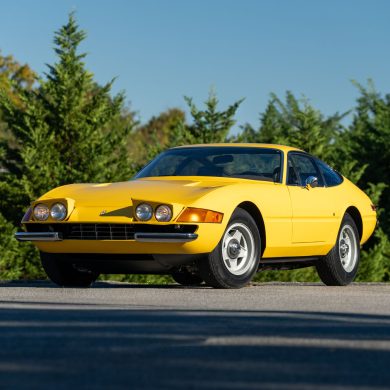
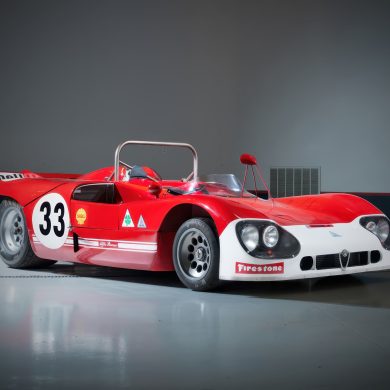
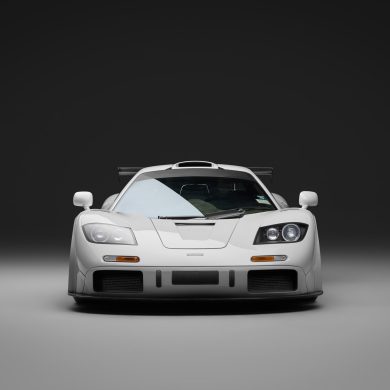
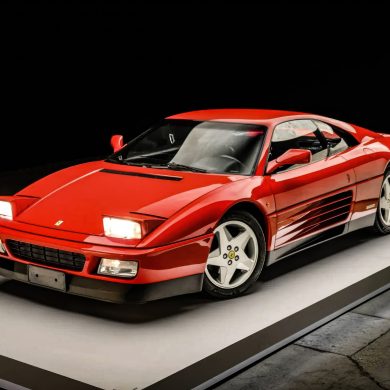
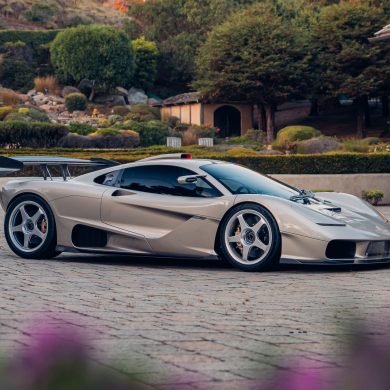
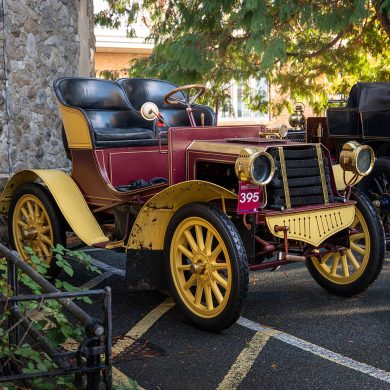


$30 million for a car that can be used only on rare occasions. At 4% this would produce $1.2 million for health clinics and/or education. Talk about screwed up priorities.
Even if the number seems inappropriate it is far from those that can be seen during art auctions. I just hope the buyer will show or even drive the car.
Yes, and … you don’t actually know that the buyer hasn’t already given such sums as you mention to well-doing projects. Maybe not. Maybe so. But though in the abstract such a calculus makes sense, in reality, a rare car is a rare car is a rare car, not a community water center, a literacy program or an inoculation campaign against polio in, say, Pakistan. Apples and oranges, oil and water. Something like that.
I don’t have a problem with it, but I do understand where you’re coming from. The same parallel could be made with nearly every purchase we make though, be it new socks, upsizing the extra value meal at McDonalds and so forth. The truth is, the buyer of this MB very well could have donated millions to charity over the years. At the end of the day, I don’t think it’s our place to judge what someone does with their money…
I do second Julien’s comment – let’s hope we can see this on the track again. That’s almost never the case with fine art.
I agree with Julien and Greg; i.e., if an equal amount of money that goes into multi-million dollar cars and art were devoted to health and education by the buyer and/or the seller.
What’s the point of reading SCD, etc. and presumably having an interest in wonderful cars if it is only an excuse to don the hair shirt and beat your breast or beat on someone with money?
” . . . from a potato town in Argentina – and he never forgot his roots.”
Argh.
Yeah, if I had £20m, I’d have bought it. It’s up to governments to provide clinics!
It looks like Mercedes beat Auto Union to the punch. A while back a fine Auto Union specimen was going up for auction and at the last minute it was pulled because it may not have been the right chassis number as originally specified. It would have possible brought close to 15-20 million US. Its fantastic to see such autos being purchased and hopefully preserved for all time with some track time obviously included in the mix. The price, who cares. If that is what the market bears than so be it. No one seems to complain when billion dollar federal programs lose their shirt so what’s the big deal here?